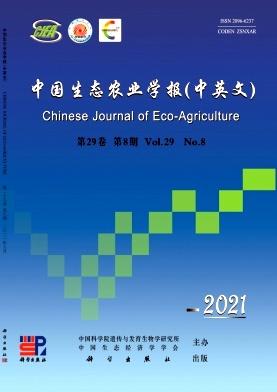Error analysis of spatial interpolation of soil texture under different sampling schemes
Q3 Agricultural and Biological Sciences
引用次数: 0
Abstract
Soil texture is a qualitative classification tool used in both the field and laboratory to determine the classes of agricultural soils based on physical texture. Surface soil texture reflects soil physical and chemical properties, which affects not only soil fertility and farming/production performance but also crop quality and yield. Precision agriculture requires reliable data on the variations in field soil properties for effective management decisions. The most common way to do this is to predict the values for un-sampled places using observed samples and represent the variations in maps. The optimal sampling method is importation in the evaluation of spatial variations in soil texture, which is more critical for fertilization or irrigation in precision agriculture. The acquisition of precise soil data which are representative of an entire survey area is critical for irrigation and fertilization in precision agriculture. Here, we compared the ability of three sampling methods used in estimating the precision agriculture practices and predict the spatial distribution of soil texture with the goal of choosing the optimal sampling method. About 289 soil samples were collected from the field at 0?20 cm depth in 16 m grid cells in the Southeast Pengshui County of Chongqing City. The geostatistics method and Geographic Information System(GIS) was used to evaluate the accuracy of the 16 m grid-cell sampling(a total of 253 sampling points), 32 m grid-cell sampling(a total of 115 sampling points) and random sampling(a total of 115 sampling points). The results showed that the largest component of the soil texture was silt and the lowest was sand. While sand and clay exhibited a medium variation, silt showed a low variation. Based on Kolmogorov-Smirnov test, sand, silt and clay were all normally distributed. Results of geostatistics analysis suggested that larger sampling intervals were needed under grid-cell sampling while lower sampling intervals could be used under random sampling of spatial variability of soil texture in the study area. Cross validation showed that the interpolation precision was highest for soil texture components under experimental control(16 m grid-cell sampling). This was followed by 32 m grid-cell sampling, while then random sampling had the lowest interpolation precision. The research indicated that based on the factors considered(including interpolation precision, cost effectiveness and timeliness), random sampling was the optimal method for analyzing soil texture in the study area.不同采样方案下土壤质地空间插值的误差分析
土壤质地是一种定性分类工具,用于田间和实验室,根据物理质地确定农业土壤的类别。表层土壤质地反映了土壤的理化性质,不仅影响土壤肥力和耕作/生产性能,还影响作物品质和产量。精准农业需要田间土壤特性变化的可靠数据,以便作出有效的管理决策。最常见的方法是使用观察到的样本来预测未采样地区的值,并在地图上表示变化。最优采样方法是评价土壤质地空间变化的重要方法,对精准农业施肥或灌溉至关重要。准确获取代表整个调查区域的土壤数据是精准农业灌溉施肥的关键。在此,我们比较了三种采样方法在估计精准农业实践和预测土壤质地空间分布方面的能力,以选择最佳采样方法。从田间采集土壤样品289份。重庆市彭水县东南部16 m网格单元20 cm深度。利用地质统计学方法和地理信息系统(GIS)对16 m格元抽样(共253个采样点)、32 m格元抽样(共115个采样点)和随机抽样(共115个采样点)的精度进行了评价。结果表明:土壤质地成分最大的是粉土,最小的是砂土;砂、粘土变化中等,粉砂变化较低。根据Kolmogorov-Smirnov检验,砂、粉、粘土均为正态分布。地统计学分析结果表明,栅格采样需要较大的采样间隔,而随机采样则可采用较小的采样间隔。交叉验证表明,在实验控制(16 m格元采样)下,土壤质地成分的插值精度最高。其次是32 m网格单元采样,然后是随机采样,插值精度最低。研究表明,综合考虑插值精度、成本效益和时效性等因素,随机抽样是研究区土壤质地分析的最佳方法。
本文章由计算机程序翻译,如有差异,请以英文原文为准。
求助全文
约1分钟内获得全文
求助全文
来源期刊

Chinese Journal of Eco-agriculture
Environmental Science-Ecology
CiteScore
2.70
自引率
0.00%
发文量
0
 求助内容:
求助内容: 应助结果提醒方式:
应助结果提醒方式:


